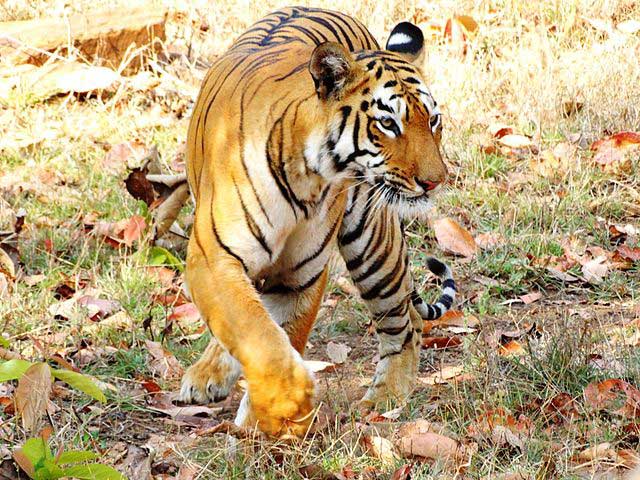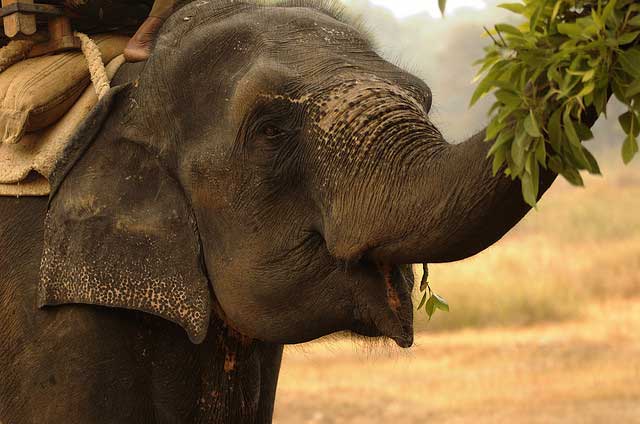India has been fore-running activities for the conservation of wildlife since the early 1930s with the establishment of Jim Corbett National Park. Jim Corbett himself saw the catastrophic reaction man had bestowed upon wildlife and gave up hunting while dedicating his life towards conservation of wild animals, especially Tigers. Wildlife is essentially classified into flora and fauna which mean, in a broad sense of speaking plants and animals respectively.
India has held a multitude of species within its varying topographies and climates. Some of the species found in India are extremely rare and even considered endangered given their declining numbers in the wild. A major step towards restoration of an animal populous dawned with Project Tiger which was initiated as per the referendum under the Wildlife Protection Act of 1972. Populations of endangered species have seen drastic improvements in numbers ever since and efforts are maintained to prevent various harmful activities that hinder in the growth of wildlife.
Wildlife Conservation Projects in India
1. Project Tiger

After the sanction of Wildlife Protection act of 1972, Project Tiger was initiated to help repopulate Royal Bengal Tigers in the Indian subcontinent. The first estimate of tiger population in India was speculated to be between 35,000 to 40,000 before the 20th century. Man made conditions, poaching and encroaching on wild land led to a harrowing decline in tiger populations over the century. Save the tiger project helped restore tiger populations from around 1400 at its lowest to around 2300 in 2015.
2. Project Elephant
In the year 1992, Project Elephant came into being. The Ministry of Environment and Forests under the Government of India decided upon taking action against the declining populations and disturbed migration of Asiatic elephants; hence initiating Project Elephant. The initiative was implemented in sixteen Indian states namely Arunachal Pradesh, Andhra Pradesh, Arunachal Pradesh, Assam, Jharkhand, Chhattisgarh, Karnataka, Maharashtra, Kerala, Meghalaya, Orissa, Nagaland, Tamil Nadu, Uttarakhand, Tripura, West Bengal and Uttar Pradesh. The primary objective of Project Elephant was to protect Wild elephants from poaching. Besides helping Elephant populations in India grow, the project also oversaw clearance of migratory Corridors for free passage of elephants. Project Elephant also oversees the welfare of domesticated and captivated elephants across Indian states.
3. National Parks And Wildlife Reserves
The government of India has allotted vast spaces of green forests for wildlife to flourish in. Several protected lands are decreed as wildlife sanctuaries, national parks and biosphere reserves meant for the sole purpose of protecting wildlife against human interference. There are 103 operational national parks in India as of 2015. The Ministry of Environment and Forest has taken keen interest in active breeding programs, tracking and protection against poaching of wildlife in the recent years. Several national parks harbor exotic species of animals like Asiatic Lions in Gir National Park and Hoolock Gibbon in Hoollongapar Gibbon Sanctuary and protect them from extinction through concentrated efforts.
4. NGOs For Wildlife In India
Several non-governmental bodies have stepped up to the demands of wildlife conservation in India as well. Activism against poaching, encroachment of forest land and habitat destruction is a common phenomenon in modern India. There are several volunteer groups and corporations that take initiative towards maintaining undisturbed environments for flora and fauna to flourish in. Some of the more renowned NGOs in India include Rhino Foundation for Nature in Assam, Wildlife Society of Orissa, Friends of Forests in Maharashtra, Nature’s Beckon in Assam, North Eastern Society for Preservation of Nature and Wildlife in West Bengal, Nature Conservation Society of Amravati in Maharashtra, Bali Nature and Wild Life Conservation Society in West Bengal and The Friends of the Doon in Uttaranchal.
India has some of the most astonishing examples of wildlife in the world. However, due to overpopulation and human effect on environment in recent years, the wildlife in India is rapidly receding inwards. It is a fact that man and nature need to coexist in order to sustain human life, making it extremely necessary for every individual to step up to his responsibility towards nature and help in its protection and nurture.




This Wikipedia is beat for making a school project
I like this Wikipedia very much
Thankyou for making this Wikipedia